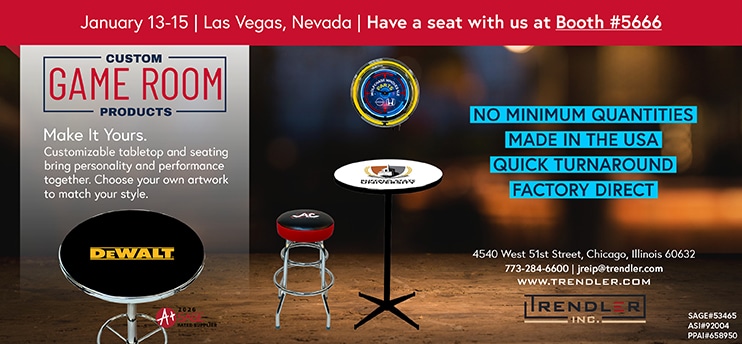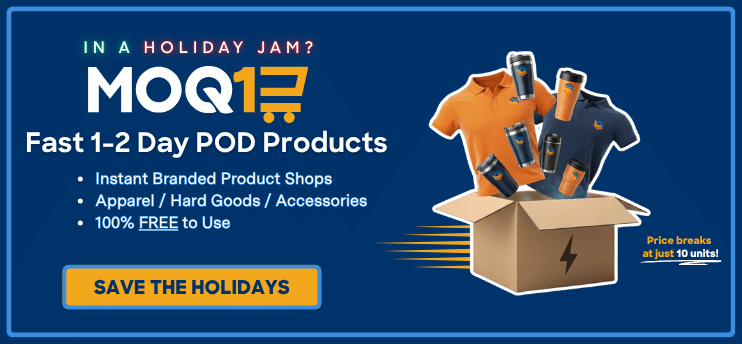If you don’t know the first thing about NFTs (non-fungible tokens) you’re certainly not in the minority. Though foreign to many people, they represent a phenomenon that consumers, brands, and designers are racing to utilize within their industries.
In the most basic sense, NFTs are units of data that can be sold and traded. Digital art, for example, is a popular form of NFT because it represents something unique that no one else can possess.
Many companies are already utilizing NFTs in their marketing, and to some, it may only be a matter of time before the promotional products industry incorporates NFTs as a mainstay. To help members better understand what shape that might take, we reached out to Nick Casares, the Head of Product for PolyientX, which creates tools to allow the NFT communities to find value through benefits, perks and rewards.

Auping: I think the average person is only just starting to understand exactly what NFTs are and where they fit into society. Can you explain in practical terms to someone who has worked with brands for years, how NFTs can work within company branding, not necessarily just in terms of its utmost potential, but also in practical terms? What does/will that look like on a common basis?
Casares:
Brands interact with consumers through myriad physical and digital touchpoints across the customer lifecycle. Ad impressions, merchandise, product placements, and social media all bring brands closer to customers through everyday touchpoints. As the world further digitizes, these touchpoints are increasingly found in consumers’ digital interactions with a brand. NFTs can enrich brand interactions by adding value through desirability and utility—all while leaving behind a unique branded item owned by the consumer.
Household brands like Nike, Adidas, Taco Bell, and Coca-Cola are already keying into this trend with experimental campaigns. It won’t be long before a wave of marketers follows suit to interject their brand’s approach to using NFTs as a vehicle for building customer relationships.
Brands will benefit most from using NFTs to provide exclusive experiences and rewards to their customers. Event access, discounts, membership programs and loyalty points are all within reach for progressive brands hoping to establish mindshare in the emerging metaverse.
A lot of promotional products have more of a practical purpose rather than an aesthetic purpose. Is there a worry that blending an NFT with a product will make it less “cool” for a lack of a better word?
Ultimately, this depends on the utility and value of the promotional product. Is it useful? Is it memorable? Is it desirable?
NFTs provide a new avenue for interaction, but they should be integrated into the brand’s products and promotions in a way that makes sense. Brand authenticity is table stakes for modern marketers, and NFTs should be seen as a tool for helping brands establish a unique and authentic voice.
Brands looking to add NFTs to their marketing toolkit should take the time to deeply understand the technology and avoid the temptation to treat NFTs as a quick-fix promotional tool. NFTs, when thoughtfully integrated into marketing efforts and product value, will help brands stand out as category leaders instead of “me too” followers.
Something I’ve heard a lot in my short time in the promotional products industry is the idea that customers and clients alike both enjoy holding the product in their hands, the sense that many products don’t seem all that special until you have one in front of you and have to admit you’d use it quite a bit. That’s all to say that I know that NFT proponents have had to counter that criticism as well, the lack of tangible feel to them. What would be your response to someone in the industry who might be a little stuck in their ways?
The tangible feel of an item is one aspect of a promo product’s utility and desirability. But how and where a promotional product is used contributes to the customers’ overall impression of value. An NFT that grants access to an exclusive experience might not be felt in the consumer’s hand. Still, it has more potential to serve as a reminder and jumping-off point for a deeper relationship with the brand. What’s more memorable for the consumer? An imprinted bottle opener or an NFT that grants access to a brand-sponsored event with an industry expert or influencer? The latter offers an opportunity to continue the dialogue while adding value for the consumer and the brand.
That said, brands that want to retain a physical product relationship can use NFTs as a redemption method for a smaller pool of higher-value items. Finally, in a world where virtual events are the norm, NFTs can serve as a bridge that allows virtual attendees to claim physical merchandise by holding an NFT.
Do you have an example of a brand utilizing NFTs that has been particularly successful or that you personally think has been a cool collaboration?
As a music fan, I’m interested in how Coachella has introduced NFTs to provide access and commemorate the Coachella Music Festival. The NFL recently partnered with several teams to offer commemorative NFTs to ticket holders. This trend will continue, and I’m excited to see how brands use NFTs to extend the customer experience through new utility, rewards, and experiences.
What else should PPAI members consider about this topic that they might not have already?
New technology has a habit of spreading slowly at first, followed by a rush of adoption (think about the past 10 years and smartphone adoption). Savvy marketers should consider how NFTs might play a part in their brand strategy. No marketer wants to be the last one on the block to learn about a new tactic, and NFTs are here to stay.
Can you explain PX Drops as pertaining to products? What does the client/product receive in this equation and what does the end customer receive?
Today, there is no central platform where marketers can connect with NFT audiences. Unless a marketer wants to wade through thousands of Twitter posts and Discord conversations, there is no scalable way to attract the attention of NFT enthusiasts.
PX Drops is our unique approach to solving this problem by connecting NFT communities with brand-sponsored rewards. Rewards come in the form of physical merch, digital goods, exclusive access, or really anything a creative marketer dreams up.
As a PX Drop sponsor, marketers choose which NFTs to target and how many rewards to give away. Holders of the selected NFTs then register to claim the reward by visiting PXdrops.com and confirming ownership of the NFT. This approach directly incentivizes NFT holders and allows a brand to hand-select the audience for engagement. As NFTs gain adoption, we believe NFT ownership will align with valuable interest groups for marketers.


